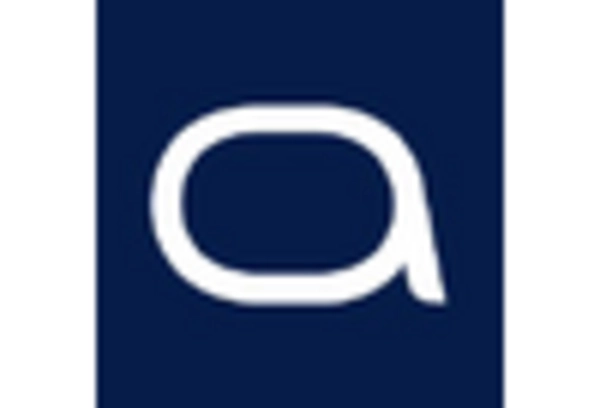Rising Healthcare Expenditure
The increasing healthcare expenditure in the United States is a significant driver of the connective tissue-disease market. As healthcare spending continues to rise, there is a corresponding increase in the availability of resources for the diagnosis and treatment of connective tissue diseases. In 2025, healthcare spending is projected to reach approximately $4.5 trillion, reflecting a growth rate of around 5% annually. This financial commitment allows for enhanced research initiatives, improved healthcare infrastructure, and greater access to advanced treatment options for patients. Consequently, the connective tissue-disease market is likely to benefit from this trend, as more funds are allocated to address the needs of patients suffering from these conditions. The increased investment in healthcare services may also lead to innovations in treatment methodologies, further propelling market growth.
Increasing Awareness and Diagnosis
The growing awareness surrounding connective tissue diseases is driving the market forward. Healthcare professionals are becoming more adept at recognizing symptoms associated with these conditions, leading to earlier diagnosis and treatment. This heightened awareness is reflected in the increasing number of patients seeking medical advice, which has been reported to rise by approximately 15% annually. As a result, the connective tissue-disease market is experiencing a surge in demand for diagnostic tools and treatment options. Furthermore, educational campaigns aimed at both healthcare providers and the public are likely to enhance understanding of these diseases, potentially leading to improved patient outcomes. The increased focus on early intervention may also contribute to a more robust market landscape, as patients are more likely to engage with healthcare systems for timely management of their conditions.
Regulatory Support for New Therapies
Regulatory bodies in the United States are increasingly supportive of the development and approval of new therapies for connective tissue diseases. Initiatives aimed at expediting the review process for innovative treatments are likely to enhance market dynamics. The FDA's commitment to facilitating access to breakthrough therapies has resulted in a more favorable environment for pharmaceutical companies. This regulatory support is expected to lead to a surge in the introduction of new drugs and treatment options, which could potentially transform the landscape of the connective tissue-disease market. As more therapies receive approval, patients will have access to a broader range of treatment options, thereby improving overall management of these conditions. This trend may also encourage further investment in research and development, as companies seek to capitalize on the opportunities presented by a more streamlined regulatory framework.
Technological Innovations in Treatment
Technological advancements in the treatment of connective tissue diseases are significantly influencing the market. Innovations such as targeted therapies and personalized medicine are becoming more prevalent, offering tailored treatment options that improve patient outcomes. The introduction of novel biologics has been particularly noteworthy, with the market for these therapies projected to reach $10 billion by 2027. These advancements not only enhance the efficacy of treatments but also reduce the side effects associated with traditional therapies. As healthcare providers increasingly adopt these technologies, the connective tissue-disease market is likely to expand, driven by the demand for more effective and safer treatment modalities. Additionally, ongoing research and development efforts are expected to yield new therapeutic options, further stimulating market growth.
Aging Population and Increased Incidence
The aging population in the United States is a critical driver of the connective tissue-disease market. As individuals age, the likelihood of developing connective tissue disorders increases, leading to a higher incidence of these diseases. Current demographic trends indicate that by 2030, approximately 20% of the U.S. population will be over 65 years old, which correlates with a projected increase in the prevalence of connective tissue diseases. This demographic shift is prompting healthcare systems to adapt and expand their services to accommodate the growing patient population. Consequently, the connective tissue-disease market is expected to see a rise in demand for both diagnostic and therapeutic solutions tailored to older adults. This trend underscores the importance of addressing the unique healthcare needs of this demographic, which may further drive innovation and investment in the market.

















Leave a Comment